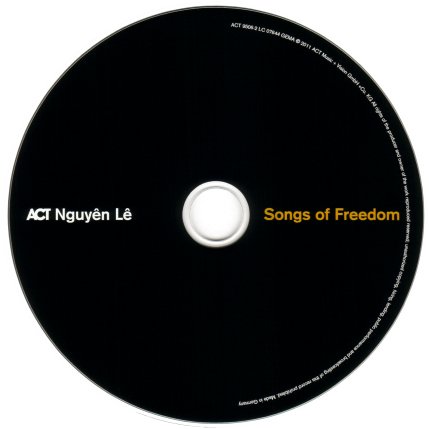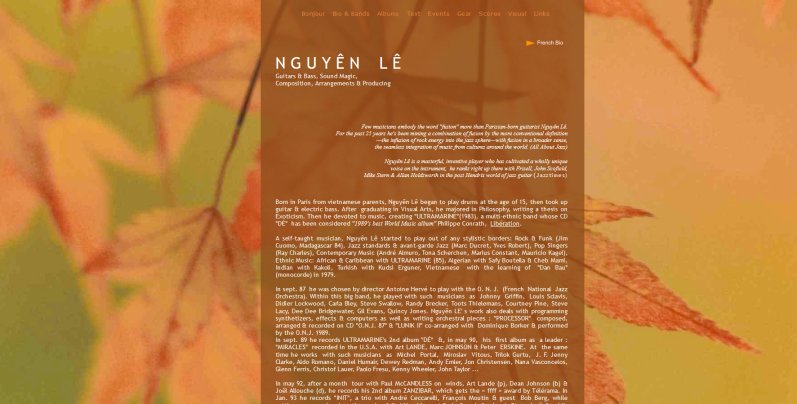 Michael David Rosenberg (born 17 May 1984), better known by his stage name Passenger, is an English singer-songwriter and musician. Previously the main vocalist and songwriter of Passenger, Rosenberg opted to keep the band’s name for his solo work after the band dissolved in 2009. In 2012, he released the song “Let Her Go”, which topped the charts in 16 countries and accumulated more than 3.3 billion views on YouTube; it is the most-viewed Australian YouTube video of all time. In 2014, the song was nominated for the Brit Award for British Single of the Year, and he received the British Academy’s Ivor Novello Award for Most Performed Work.
Michael David Rosenberg (born 17 May 1984), better known by his stage name Passenger, is an English singer-songwriter and musician. Previously the main vocalist and songwriter of Passenger, Rosenberg opted to keep the band’s name for his solo work after the band dissolved in 2009. In 2012, he released the song “Let Her Go”, which topped the charts in 16 countries and accumulated more than 3.3 billion views on YouTube; it is the most-viewed Australian YouTube video of all time. In 2014, the song was nominated for the Brit Award for British Single of the Year, and he received the British Academy’s Ivor Novello Award for Most Performed Work.

Rosenberg was born on 17 May 1984 in Brighton to Quaker parents, English mother Jane and American Jewish father, Gerard Rosenberg, originally from Vineland, New Jersey. Rosenberg learned classical guitar at a young age and at around 14–15 started to write songs.[citation needed] Rosenberg left school at the age of 16 to pursue a career in the music industry and spent the next few years as a busker in England and Australia.
Rosenberg did his first performance when he was 16.[citation needed] Rosenberg’s father, a film production worker, introduced him to former member of the band Faithless, Jamie Catto, in 2001; this led to Rosenberg getting a two-song spot at the Free Burma Campaign benefit gig at the Royal Court in London in 2002. On the night, Rosenberg met his future writing partner Andrew Phillips and established contact with the IE Music label.[citation needed] Back in Brighton, Phillips and Rosenberg pooled their musical influences (from Simon & Garfunkel to DJ Shadow), and started to write songs at Phillips’ in-house studio in Hove.[citation needed] In 2003, they formed the Mike Rosenberg Band, engaging Marcus O’Dair (bass), Alon Cohen (drums) and Richard Brinklow (keyboards) through connections within the Brighton music scene.

Rosenberg founded the band Passenger with Andrew Phillips in 2003 in Brighton and Hove. The name of the band was stylised as /Passenger. (with a slash at the beginning and a dot at the end). The five-person band’s only album, Wicked Man’s Rest, was released in 2007, on Chalkmark. Rosenberg wrote the majority of the album’s tracks, with the exception of “Four Horses”, which was written by Phillips. The band broke up in 2009.
After the break-up of Passenger, Rosenberg kept the band’s name as his personal stage name, and took to busking for a solo music career. In October 2009 he went to Australia, where he supported acts such as Lior and Sydneysiders Elana Stone and Brian Campeau.[citation needed] He then played at One Movement, a major music industry-focused festival in Perth.[citation needed] This earned him a following in Australia and he was selling out 500-seater venues across Australia.[citation needed] His debut solo album, Wide Eyes Blind Love, was released in 2009. It was produced and mixed by former bandmate Andrew Phillips, who also provided backing vocals, and played guitar and other instruments, and featured vocals by Isobel Anderson.[citation needed] Rosenberg also played various shows in the United Kingdom during this time,[when?] including a support slot for Turin Brakes’ tenth anniversary show at Theatre Royal, Drury Lane in London.

Rosenberg produced a fans-only limited release Divers and Submarines, again supported by former bandmate Andrew Phillips and vocalist Isobel Anderson. His third studio album, Flight of the Crow, was recorded in Australia and saw him joined in the studio by various Australian independent musical talents including Lior, Kate Miller-Heidke, Boy & Bear, Josh Pyke and Katie Noonan.
Rosenberg’s fourth album, All the Little Lights, was released in the summer of 2012 in North America on Nettwerk Records. Recorded at Linear Recording in Sydney, Rosenberg worked with a core Australian band that included Boy & Bear drummer Tim Hart, jazz bassist Cameron Undy, and keyboards player Stu Hunter, from Katie Noonan and The Captain better source needed] During the summer and autumn of 2012, Rosenberg toured the UK, opening for Jools Holland and Ed Sheeran, the latter of whom he had known since Sheeran was about 15 while living in Cambridge. He joined Australian acts the John Butler Trio, and Josh Pyke with a co-headlined UK tour. He also opened for Ed Sheeran’s 2012 North American tour and also in Paris. He also opened for Ed Sheeran on four of his five sell-out dates in Ireland in January 2013 and in Australia and New Zealand in early 2013, and supported Sheeran in his Brighton dates and in Reading. Rosenberg performed “All the Little Lights” at the Children in Need Rocks concert at the Hammersmith Apollo in London, broadcast on BBC One on 14 November 2013.

On 24 March 2014, Rosenberg unveiled “Whispers”, the title track of his new album, as part of his set at the Teenage Cancer Trust charity concert at the Royal Albert Hall in London where he also performed alongside Ed Sheeran. On 26 March 2014 Rosenberg announced details of his fifth studio album.[citation needed] He released Whispers on 9 June 2014.[citation needed] Talking to Digital Spy about the album, he said: “This is easily the most ‘up’ album I’ve ever made, it’s quite cinematic. There are lots of big stories and big ideas. There are also some sombre moments about loneliness and death but hey, it wouldn’t be a Passenger album without those”. He released “Hearts on Fire” as the album’s lead single on 14 April 2014.
Rosenberg recorded Whispers II at the same time as recording Whispers.[citation needed] Whispers II was released on 20 April 2015. All profits from the album go to the UNICEF UK initiative to help children in Liberia.
On 16 June 2016, the music video for “Somebody’s Love” was uploaded to his YouTube channel, thereby announcing his seventh album, Young as the Morning, Old as the Sea.[citation needed] A second track from the album, “Anywhere” was released on 19 August 2016. Young as the Morning, Old as the Sea was released on 23 September 2016, and became Passenger’s first UK number one album.

On 25 July 2017, at the end of his Young as the Morning, Old as the Sea tour, Rosenberg announced via the Passenger Facebook page that his performance on Sunday 23 July would be “my/our last gig for a while”. The following day, he announced that his eighth album, The Boy Who Cried Wolf, would be released two days later on 28 July 2017.[citation needed] The album was announced with a livestream of the album performed live in its entirety, broadcast from Passenger’s studio simultaneously to YouTube and Facebook.The album charted at number 5 in the Official UK Charts.
On 18 May 2018, Passenger released the song “Hell or High Water”. It was recorded in a variety of different national parks across Utah, Nevada, Arizona and California In the following days, he also announced an autumn European tour [28] and teased fans through social media with a cover for a new album.

On 25 May 2018, he formally announced his ninth studio album, Runaway, and released a live acoustic version of “Hell or High Water” recorded in Venice, Los Angeles. Passenger described Runaway as a concept album, as he realised many of the songs had a strong sense of Americana. He also believed the songs would work well accompanied by American visuals and thus, alongside long-time collaborators Jarrad Seng, Stu Larsen and Chris Vallejo, embarked on a three-week-long road trip through the United States to film videos for each track. Additionally, they recorded acoustic videos for each track, filmed in a variety of different locations. Rosenberg plans to release a song every three weeks, sharing both the official and acoustic videos, plus behind-the-scenes footage. Runaway was released on 31 August 2018.
On 18 March 2019, Passenger released the song “Restless Wind” on YouTube. Two more songs, “Helplessly Lost” and “Paper Cut, Chinese Burn,” were subsequently released a month later, as well as a cover of Fleetwood Mac’s “Landslide”. On 2 May 2019, Passenger both announced and released his tenth album, Sometimes It’s Something, Sometimes It’s Nothing at All.[citation needed] Unlike more recent Passenger albums, the record is arranged entirely for vocals, acoustic guitar and a string quartet. All the profits from sales will be donated to Shelter, a UK-based homeless charity.

At the end of January, Passenger announced a world tour including dates in the UK, Europe, Australia, North America, and New Zealand. On 20 March 2020, he announced and released his new single “The Way That I Love You” with a video. On 1 May 2020, he released his new single “London In The Spring”. On 10 July 2020, Passenger released his eleventh album Patchwork. The album was written and recorded during the coronavirus lockdown alongside producer Chris Vallejo and guest musicians Andrew Phillips (a collaborator of Rosenberg’s and formerly of the band Passenger) and Richard Brinklow. The record was released as a funding project for The Trussell Trust, an NGO and charity that works to end the need for food banks in the UK.

On 8 January 2021, Passenger released Songs for the Drunk and Broken Hearted. The record was supposed to be released by early 2020, but later delayed due to the coronavirus lockdown. The record’s release supports both Ecologi and Eden Reforestation Projects, non-profit organisations aiming to rebuild natural landscapes destroyed by deforestation. A tree will be planted for every physical copy of the album sold via the Passenger store.
On April 14 2022, Passenger released his 14th studio album, Birds That Flew and Ships That Sailed. The album was released independently, without a record label or a press team.[38] The record release supports Plastic Bank, a social enterprise that combats plastic pollution in the ocean.[citation needed] The record debuted at Number 35 on the Official UK Albums Chart, marking Passenger’s 8th album to enter the UK Top 40.[39]
Rosenberg currently lives in Brighton.[5] He is a fan of English football club Arsenal F.C. In a 2021 interview, he said he became an Arsenal supporter despite being from Brighton after watching Arsenal beating Sheffield Wednesday F.C. in the FA Cup Final in 1993.[40] In May 2015, Rosenberg appeared at Arsenal’s ‘A Night to Inspire’ event and played a version of the ’49 Undefeated’ fan chant. (wikipedia)

All the Little Lights is the fourth studio album by English singer-songwriter Passenger and was released by Black Crow Records and Nettwerk on 24 February 2012. The album contains 12 tracks, comprising 11 studio tracks recorded at Sydney’s Linear Recording, and one song recorded live at The Borderline in London. A limited edition features a second disc containing acoustic versions of eight songs from the album. (wikipedia)

Mike calls it F*ing depressing folk music, but when I’m down, this is what lifts me. When I’m not down, I just love to hear his voice and his music. I would LOVE to hear him in person.
Passenger music takes a little slice of life and gives it wings. Likes many people, I heard Let Her Go on the radio and loved it, so I looked up the band and founded everything I could find. All the Little Lights is his best album to date, though honestly Crows in the Snow (not on this album) is my least favorite song of his and even it has begun to grow on me. The title song from this album describes how little pieces of us die out through our hard times and poor decisions. Holes is probably one of my favorites about how things we view as losses might actually be good for us…we miss them like holes in our heads. There are some lighter hearted songs that still have deeper meaning, like Wrong Direction (fun to try to keep up with the song, but the video is even better) and I Hate. Every song on this album is beautiful and meaningful. I grew up listening to artists like Cat Stevens, Bob Dylan. There are moments listening to Passenger that bring back childhood memories of listening to both of those. (by Laura Thomas)

Songwriter, artist, musician, poet, entertainer, philosopher, storyteller – If you love and appreciate great song craft and are not yet fully immersed in Passenger’s work, you should be. If you are familiar and fully acquainted but don’t absolutely love what he does, then there is something wrong with you.
I just stumbled into his albums recently and was completely blown away. Then, I saw him in concert last night and became even more impressed. His ability to move a listener – whether in recorded content or, even better, live in person, is matched by very few. In a mass of generic, uninspiring noise, Passenger is the real deal. His ability to weave a story in his music and stimulate emotional response is reminiscent of some of the best of the past: Jim Croce, Paul Simon, Tom Waits, Bob Dylan.
I challenge you to spend some good, quality time getting lost in Passenger’s music and not coming away feeling better – inspired, moved, content, joyful. (by Aeden)

Pesronnel:
Jess Ciampa (percussion on 03., 06., 08. + 11)
Alan Davey (trumpet on 05.)
Tim Hart (drums on 04., 07. + 08., banjo on 03., 06. + 09., mandolin on 06.)
Stuart Hunter (keyboards, synthesizer)
Declan Kelley (drums on 05.)
Mike “Passenger” Rosenberg (vocals, guitar, omnichord on 01., 03. + 05.)
Cameron Undy (bass)
Glenn Wilson – drums on 01. – 03, 09. + 10.)
+
brass on 03., 07, 09. – 11.):
Lucian McGuiness – Simon Ferenci – Sam Golding
+
strings on 01., 02., 04. + 06.):
Janine Boubbov (cello)
Madeleine Boud (violin)
Kerry Martin (violin)
Shelley Soerensen (viola)
+
background vocals:
Stu Larsen – Georgia Mooney
 Tracklist:
Tracklist:
01. Things That Stop You Dreaming 3.34
02. Let Her Go 4.11
03. Staring At The Stars 3.24
04. All The Little Lights 3.55
05. The Wrong Direction 3.39
06. Circles 3.09
07. Keep On Walking 4.06
08. Patient Love 3.07
09. Life’s For The Living 4.32
10. Holes 3.31
11. Feather On The Clyde 4.01
12. I Hate (live from The Borderline, London) 3.30

*
**

More from Passenger:

The official website:

 Seville-born Javier Heredia is a flamenco singer but also a “festero”, who specializes in dancing while singing bulerías. Heredia has performed for over 20 years, and his career is marked with numerous artistic achievements and international recognitions. He has appeared several times in Seville’s prestigious Flamenco Bienal in line with artists such as Manuel Molina, El Extremeño, and Juana la del Pipa among others. In other numerous festivals and events, he has performed with notable artists such as Jose de la Tomasa, Pansequito, Inés Bacán, Miguel el Funi, Concha Vargas, Juan Villar, Carmen Ledesma, Angelita Vargas, and Aurora Vargas. Most notably, he has appeared in various theater productions of the legendary dancer Manuela Carrasco, includingthe Bienal, and he toured across Europe with her company in 2004-2005.
Seville-born Javier Heredia is a flamenco singer but also a “festero”, who specializes in dancing while singing bulerías. Heredia has performed for over 20 years, and his career is marked with numerous artistic achievements and international recognitions. He has appeared several times in Seville’s prestigious Flamenco Bienal in line with artists such as Manuel Molina, El Extremeño, and Juana la del Pipa among others. In other numerous festivals and events, he has performed with notable artists such as Jose de la Tomasa, Pansequito, Inés Bacán, Miguel el Funi, Concha Vargas, Juan Villar, Carmen Ledesma, Angelita Vargas, and Aurora Vargas. Most notably, he has appeared in various theater productions of the legendary dancer Manuela Carrasco, includingthe Bienal, and he toured across Europe with her company in 2004-2005.









 This Anglo-American supergroup could be seen as a canny way of raising the international profile of two of Britain’s most inventive jazz musicians.
This Anglo-American supergroup could be seen as a canny way of raising the international profile of two of Britain’s most inventive jazz musicians.





 Texas’ Quaker City Night Hawks play a raw, hard-hitting brand of old-school Southern rock that draws on their love of country and blues. Following their arrival in the 2010s, Quaker City Night Hawks grabbed ears with albums like 2013’s Honcho and having their songs featured on TV’s Sons of Anarchy. In 2016, they broke even wider with their album El Astronauta.
Texas’ Quaker City Night Hawks play a raw, hard-hitting brand of old-school Southern rock that draws on their love of country and blues. Following their arrival in the 2010s, Quaker City Night Hawks grabbed ears with albums like 2013’s Honcho and having their songs featured on TV’s Sons of Anarchy. In 2016, they broke even wider with their album El Astronauta.










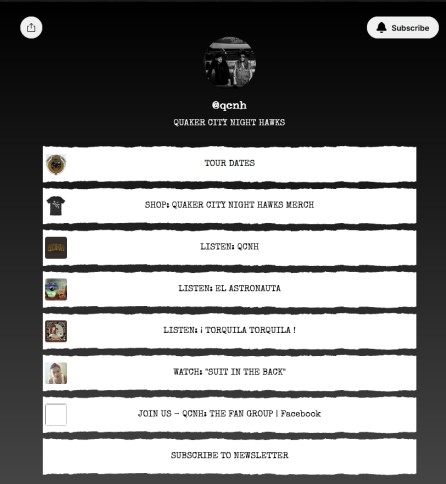
 Dorothee Oberlinger (born 2 September 1969) is a German recorder player and professor.
Dorothee Oberlinger (born 2 September 1969) is a German recorder player and professor.












 Eric Alexander (born August 4, 1968) is an American jazz saxophonist.
Eric Alexander (born August 4, 1968) is an American jazz saxophonist.










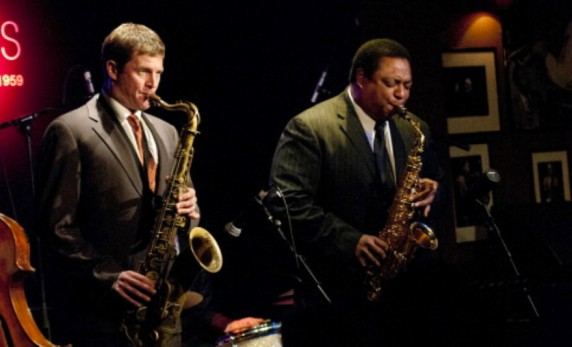



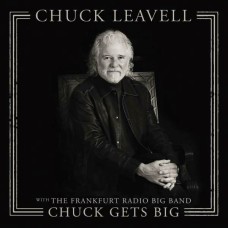 Charles Alfred Leavell (born April 28, 1952) is an American musician. A member of the Allman Brothers Band throughout their commercial zenith in the 1970s, he subsequently became a founding member of the band Sea Level. He has served as the principal touring keyboardist and musical director of the Rolling Stones since 1982. As a session musician, Leavell has performed on every Rolling Stones studio album released since 1983 with the exception of Bridges to Babylon (1997). He has also toured and recorded with Eric Clapton, George Harrison, David Gilmour, Gov’t Mule and John Mayer. (wikipedia)
Charles Alfred Leavell (born April 28, 1952) is an American musician. A member of the Allman Brothers Band throughout their commercial zenith in the 1970s, he subsequently became a founding member of the band Sea Level. He has served as the principal touring keyboardist and musical director of the Rolling Stones since 1982. As a session musician, Leavell has performed on every Rolling Stones studio album released since 1983 with the exception of Bridges to Babylon (1997). He has also toured and recorded with Eric Clapton, George Harrison, David Gilmour, Gov’t Mule and John Mayer. (wikipedia)





 It’s 2011 and Chuck Leavell, pianist extraordinaire who has often lent himself to rock (Allman Brothers Band and, today, Rolling Stones, just to name two bands), is on tour in Europe. Arriving in Frankfurt, Germany, he is asked to play with a big band, The Frankfurt Radio Big Band, a mighty ensemble of about fifteen brass players, plus a guitarist, bassist and drummer. Chuck’s grand piano fits right in, despite having had little time to arrange the songs and play them live. Fortunately, someone decided to record (well) the concert, which Chuck then kept in his drawers for many years before listening to it again, appreciating it and finally deciding to publish it.
It’s 2011 and Chuck Leavell, pianist extraordinaire who has often lent himself to rock (Allman Brothers Band and, today, Rolling Stones, just to name two bands), is on tour in Europe. Arriving in Frankfurt, Germany, he is asked to play with a big band, The Frankfurt Radio Big Band, a mighty ensemble of about fifteen brass players, plus a guitarist, bassist and drummer. Chuck’s grand piano fits right in, despite having had little time to arrange the songs and play them live. Fortunately, someone decided to record (well) the concert, which Chuck then kept in his drawers for many years before listening to it again, appreciating it and finally deciding to publish it.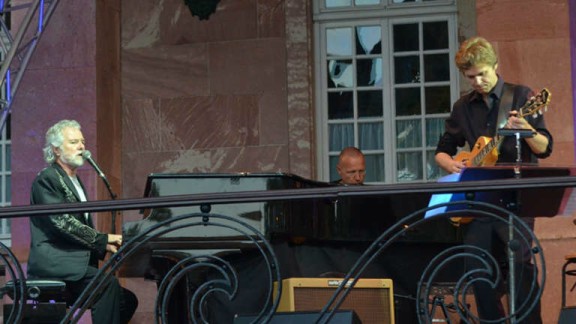







 Jack Jezzro is a musician and producer who has enjoyed a long and successful career as a studio musician, accompanying a wide variety of major artists on their recordings, as well as crafting his own albums in which he shows off his talent and versatility as a guitarist.
Jack Jezzro is a musician and producer who has enjoyed a long and successful career as a studio musician, accompanying a wide variety of major artists on their recordings, as well as crafting his own albums in which he shows off his talent and versatility as a guitarist.
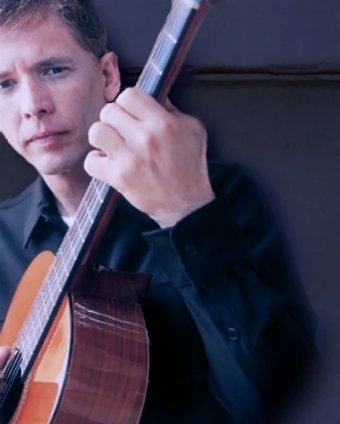





 A sophisticated jazz ensemble, Tingvall Trio centers on Swedish pianist Martin Tingvall. Also featured in the trio are Cuban bassist Omar Rodriguez Calvo and German drummer Jürgen Spiegel. Formed in 2003, the group came together after the Snarestad-born Tingvall finished his college studies and relocated to Hamburg, Germany. They debuted with Skagerrak in 2006, followed two years later by Norr. More well-received albums were released, including Vattensaga and 2011’s Vägen, the latter of which entered the German charts. In 2010 and 2012, the trio took home the ECHO jazz award for ensemble of the year. After a live album, they returned with the 2014 studio effort Beat. In 2017, Tingvall Trio released their seventh album, Cirklar. (by Matt Collar)
A sophisticated jazz ensemble, Tingvall Trio centers on Swedish pianist Martin Tingvall. Also featured in the trio are Cuban bassist Omar Rodriguez Calvo and German drummer Jürgen Spiegel. Formed in 2003, the group came together after the Snarestad-born Tingvall finished his college studies and relocated to Hamburg, Germany. They debuted with Skagerrak in 2006, followed two years later by Norr. More well-received albums were released, including Vattensaga and 2011’s Vägen, the latter of which entered the German charts. In 2010 and 2012, the trio took home the ECHO jazz award for ensemble of the year. After a live album, they returned with the 2014 studio effort Beat. In 2017, Tingvall Trio released their seventh album, Cirklar. (by Matt Collar)







 Michael David Rosenberg (born 17 May 1984), better known by his stage name Passenger, is an English singer-songwriter and musician. Previously the main vocalist and songwriter of Passenger, Rosenberg opted to keep the band’s name for his solo work after the band dissolved in 2009. In 2012, he released the song “Let Her Go”, which topped the charts in 16 countries and accumulated more than 3.3 billion views on YouTube; it is the most-viewed Australian YouTube video of all time. In 2014, the song was nominated for the Brit Award for British Single of the Year, and he received the British Academy’s Ivor Novello Award for Most Performed Work.
Michael David Rosenberg (born 17 May 1984), better known by his stage name Passenger, is an English singer-songwriter and musician. Previously the main vocalist and songwriter of Passenger, Rosenberg opted to keep the band’s name for his solo work after the band dissolved in 2009. In 2012, he released the song “Let Her Go”, which topped the charts in 16 countries and accumulated more than 3.3 billion views on YouTube; it is the most-viewed Australian YouTube video of all time. In 2014, the song was nominated for the Brit Award for British Single of the Year, and he received the British Academy’s Ivor Novello Award for Most Performed Work.











 Tracklist:
Tracklist:



 Nguyên Lê (Vietnamese: Lê Thành Nguyên; born 14 January 1959) is a French jazz musician and composer of Vietnamese ancestry. His main instrument is guitar, and he also plays bass guitar and guitar synthesizer.
Nguyên Lê (Vietnamese: Lê Thành Nguyên; born 14 January 1959) is a French jazz musician and composer of Vietnamese ancestry. His main instrument is guitar, and he also plays bass guitar and guitar synthesizer.
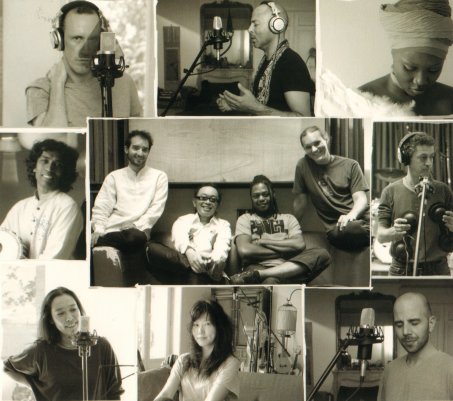
 original’s gravitas, as Lê takes its preexisting Indo-centricity further, giving it an idiosyncratic arrangement; its chorus gradually building to staggering contrapuntal confluence and impressive solos from Lê and Amar, before a newly composed section leads to an ostinato-driven drum solo that avoids all the clichés of the original…all in a nice, compact five minutes.
original’s gravitas, as Lê takes its preexisting Indo-centricity further, giving it an idiosyncratic arrangement; its chorus gradually building to staggering contrapuntal confluence and impressive solos from Lê and Amar, before a newly composed section leads to an ostinato-driven drum solo that avoids all the clichés of the original…all in a nice, compact five minutes.

